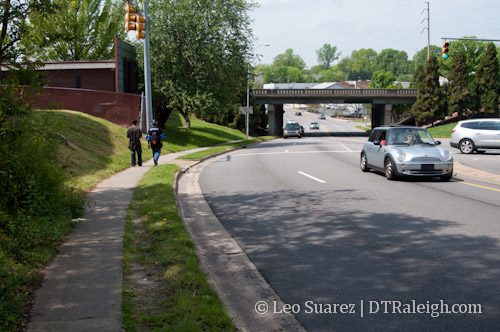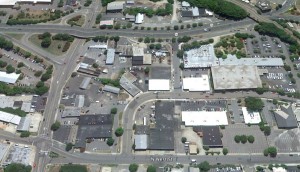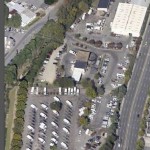This is a guest post provided by Sandra Simpson at Greetings from Green NC, a new site about sustainable practices and food around the triangle. I challenged Sandra to come up with a list of things to do for Earth Day and here is her list.
Downtown Raleigh NC rocks, and when it comes to observing Earth Day, there are many choices to be enjoyed-not just on April 22nd, but all month long. Here are my top ten picks for saying, “thanks Mother Earth.”
10. For a short stroll, park your car and take a walk around City Market and Moore Square. This historic downtown area provides visitors with an urban earth ambience. There is nothing quite like the comforting sound of footsteps on the cobblestone streets while trekking between City Market Produce (the old fashioned open-air produce) and Benelux Cafe, just to name a few businesses. Visitors can enjoy this as an Earth Day event or put this destination on the calendar as a reminder for visiting on many of our beautiful days in downtown Raleigh.
9. Earth Day is a great day to explore Raleigh by bike. Save the ozone and reduce your carbon footprint by taking a bike rather than cranking up your carbon-emitting vehicle. Feel safer in numbers? Check into the Tuesday night bike rides organized by Boylan Bridge Brewpub or Benelux Cafe at the City Market.
8. What better way to enjoy the bounty of Mother Earth than by growing your own produce? No need to allow small spaces to limit your gardening possibilities; Logan’s Trading Company at Seaboard Station in downtown Raleigh has taken the container garden idea one step further by including pallet gardens, vertical gardens made out of cinder blocks, EarthBox containers, window boxes, etc. When you are enjoying the fresh basil and tomato sandwiches all summer long, fresh from your own garden, you will have Earth Day inspirations to thank.
7. Soak up the sun or enjoy Mother Earth’s moonlight when dining out-of-doors. When searching for outdoor seating for dining or looking for a good home brew, check out these spots for dining-out-of-doors in downtown Raleigh. Roof-top Busy Bee, freshly brewed beer at Boylan Bridge Brewpub, Raleigh Times, Flying Saucer, and my all-time favorite dining and drinking establishment with outdoor seating-Humble Pie.
6. Raleigh is rapidly becoming more pedestrian-friendly, and the 2-mile downtown Raleigh “Sustainability Walking Tour” is a great way to see what Raleigh is doing to preserve Mother Earth. Taking the walk will help you feel good about how your city tax dollars are being spent and you can get some exercise at the same time. Sustainable Raleigh has already measured and mapped a trail for your convenience. If you want to specifically check out what Raleigh is doing to help sustain our environment, Raleigh has 24 points of interest from the preservation of historic Shaw University to the area’s only solar-powered Electric Vehicle Charging Station. You can print the brochure or click on the “app map” for a self-guided-mile trek. For the Google map and more information, please refer to www.raleighnc.gov/sustainableraleigh. Sustainable Raleigh Map is on the right side.
5. Take time to educate your children about ways to save the earth. Start by reducing your family’s carbon foot print by unplugging the TV and the video games and heading outside for an eco-friendly picnic at Pullen Park. A great way to teach sustainability by example is to pack the picnic with reusable utensils, tablecloths, thermoses, cloth napkins and dish towels. A yard sale is a great way to purchase slightly used picnic supplies. If you have to buy utensils choose those made from recycled paper and do not forget to recycle! Reuse and Recycle, save our trees!
4. When selecting ways to celebrate Earth Day and beyond don’t forget the major recycling centers at Five Points. The time honored tradition of antiquing has long been a way to reuse and recycle other than using valuable resources to make new furniture and household items. Not in the mood for antiques? Villa Consegna is Five Points answer to gently used designer outfits.
Two establishments have chosen to retro-fit and maintain the original buildings. NO FO is a charming re-invention of the Five Points Piggly Wiggly grocery store and part of the original Hayes Barton Pharmacy is now an upscale dining establishment with the most generous portion of really good chicken chicken pot pie. The lunch counter is the perfect spot to enjoy the generous homemade desserts.
3. If tree hugging is your way of celebrating Earth Day, then you might want to visit the 400 plus acres at Dorothea Dix. In the early 1900’s Dix was home to a dairy, a vineyard and a greenhouse. No longer producing and growing their own food and spirits, the site maintains an old stand of oak and pecan trees. On a hot day you can feel the temperature drop as you enter the canopy of old growth trees. The future of Dorothea Dix is often a hot topic. Stop by and see for yourself how this shady spot improves the environment of the Downtown.
2. Stop by an urban garden, kinda, the NC State Farmers Market offers visitors to “pick their own” from the variety of fruits, vegetables and plants that are brought there by farmers from all over the state. My favorite sustainable farmer is Erin Weston at Weston Farms, all the way at the north end of the building stop by and here Ernin’s story of sustainability.
1. We all have been watching The Daily Planet come to life and now we can see what is inside. The grand opening of the Nature Research Center at the NC Museum of Natural Sciences is the number one thing to do to warm up for EARTH DAY. The NRC is a day-in-day-out salute to discovering how to keep our planet alive and well and most of all stir the minds of the school children all across our state. In addition to the research projects that can be observed at the museum, live feeds from studies off the coast of NC will be broadcast to NC schools. The head of the New Nature Research Center is Margaret D (Meg) Lowman, affectionally and professionally known as Canopy Meg. Thanks Canopy Meg for choosing Raleigh as your base camp for saving our planet.



